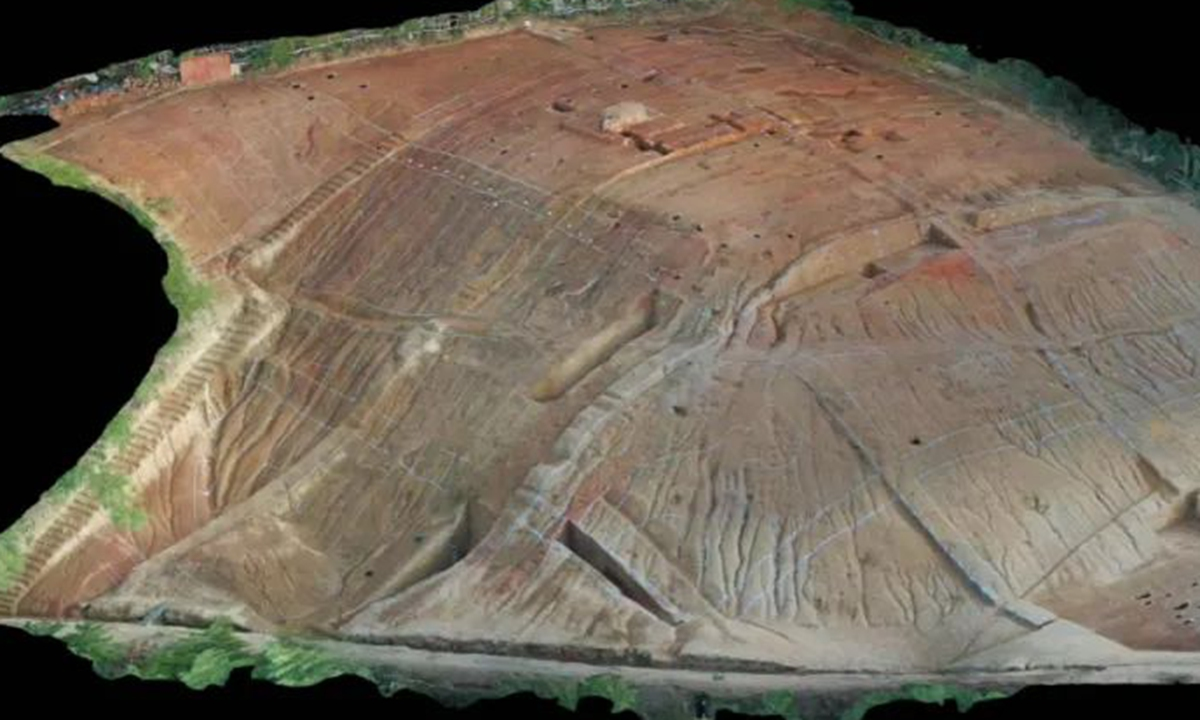Findings break new ground for Shang Dynasty archaeology
Jan. 03, 2024
Photo: Xiaogucheng relic site
Peking University, January 3, 2024: A neatly planned courtyard-type building cluster dating to the Shang Dynasty (C.1600BC-1046BC) and a well-preserved flood gate are among some of the latest findings that have been unearthed at the Xiaogucheng relic site in Hangzhou, East China's Zhejiang Province, the site's project manager told the Global Times on Tuesday.
The newly unveiled relics from the Xiaogucheng site are significant discoveries from the pre-Qin era in southern China and provide important materials for research on topics such as the culture and society of the Shang-Zhou period in southern China and exploration of China's civilization process, Luo Rupeng, director of the Zhejiang Provincial Institute of Cultural Relics and Archaeology and project manager of the Xiaogucheng site, told the Global Times.
The Xiaogucheng site stretches over the Tiaoxi River, which is one of the original Chinese porcelain-making sites. The excavation started in 2004 and a number of pottery wares and buildings made in the late Shang Dynasty have been unearthed in recent years, providing crucial evidence for historians to learn about ancient Zhejiang before the Qin Dynasty (221-206 BC).
An unearthed courtyard-like building cluster was about 1,200 square meters in size and the structure of the buildings vary from red clay homes to pole-supported houses.
"They were constructed in orderly rows. We will conduct an analysis of the relationship between the buildings to better understand the specific construction of the building cluster," Luo noted.
Meanwhile, researchers are investigating the function of a man-made platform measuring up to 12 meters in height and 2,000 square meters in size. It was the first Shang Dynasty platform of this type ever found in China.
The platform is grand and imposing and the foundations were built precisely to align with the four directions of east, west, south and north.
"The platform is of great value and reveals complex construction techniques as it was wrapped up with neat layers of colored soil. It was not a residence and might have had special functions such as for holding sacrifices or astronomical observation. We are still researching its purpose," said Luo.
Archeologists also found a structurally complete flood gate, which is the earliest flood gate found in southern China.
The wooden remains at the bottom of the gate are well-preserved and was likely used to control floods or block ships. The Tiaoxi River running through the relic site was turned into a natural moat along with two other waterways, according to Luo.
These new findings are as important as the bronze wares unearthed in the Sanxingdui Ruins in Guanghan, Southwest China's Sichuan Province. They offered fresh insight into the history of the Shang Dynasty from a southern China perspective, he said.
The findings were disclosed at a seminar held in Hangzhou on Sunday with experts from institutions such as Peking University, Hohai University, Shanghai Museum, Guangzhou Institute of Cultural Heritage and Archaeology, and Liangzhu Museum joining in the research.
